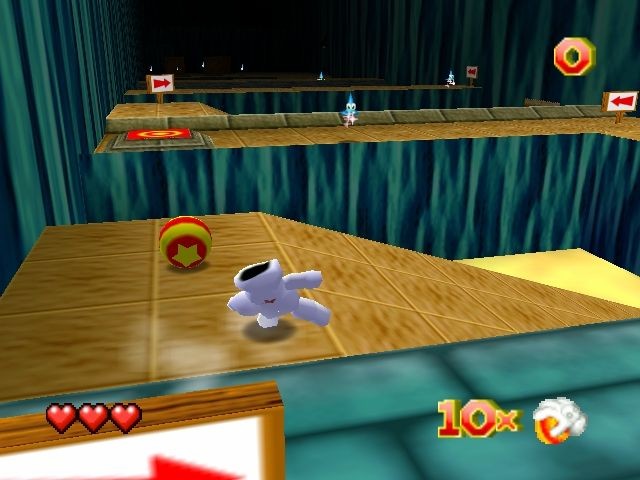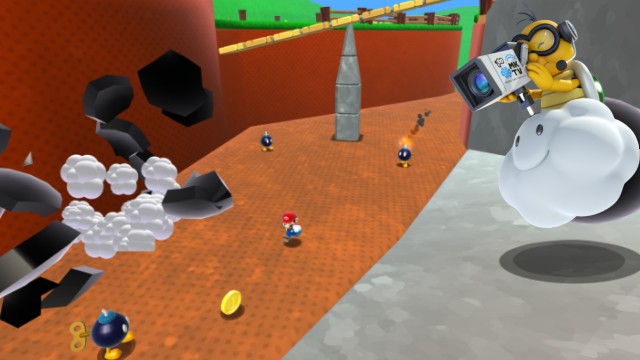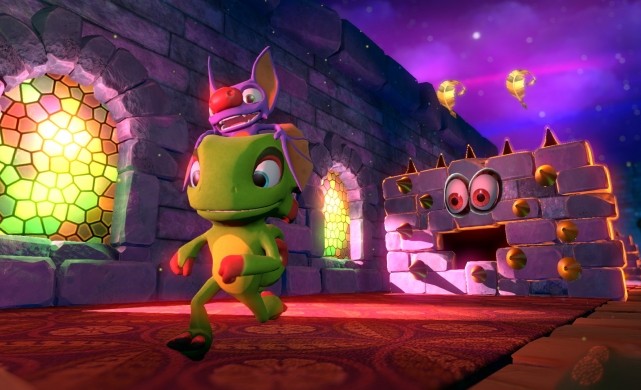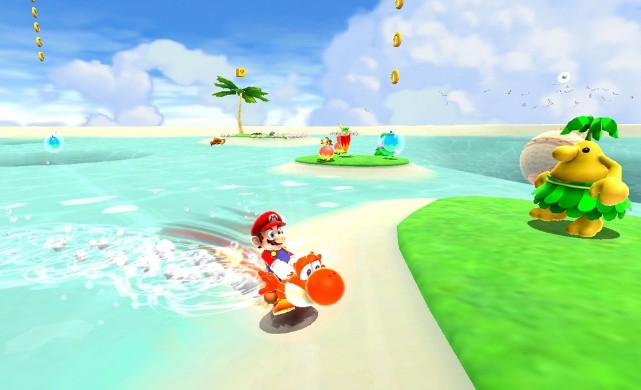Funny how no matter how mesmerizing a particular view of the landscape in 3D world of a game may be, that those good vibes can all go to hell the moment you take one wrong step of a Cliffside, and fall to your grisly death?
Getting killed by awful camera controls is the platformer equivalent of getting hit with your own koopa-troopa shell in Mario Kart; it’s easily one of the most frustrating occurrences that the genre is culpable of, so much so that the merit of a platformer can be judged by the polish of their camera dynamics.
Take Yooka-Laylee for instance, the game has plenty of good to offer, but it’s guilty on more than one occasion of forcing bad viewpoints on a player during its more harrowing platforming sequences. Purists may argue that bad technical elements like these are all a part of the 3D Platformer experience, and that to parse a platformers quality over these flaws would be the same condemning a Beatles’ Reunion album for its “dated” sound.
That analogy isn’t entirely accurate though is it; Not all may appreciate the quirks to the legendary band’s sound, but those criticisms all come from a subjective place — bad camera angles are just a flaw that objectively hurts the content it plagues, no matter how you want to dice it. It’s fascinating that rose-tinted glasses borne of nostalgic devotion could blind them to the ugly truth behind cumbersome perspectives, but these were also concessions that we were willing to make out of an understanding for the technical limitations that the genre had at the time in its prime — keyword there is HAD.
There’s no reason for these issues to exist in an age where free-roaming cameras that are dynamically adjustable should exist. Granting total player control over a shifting camera angle isn’t the daunting task that it once was, with a variety of alterations to the mechanic that make it feel as seamless, and liberating as you should feel when exploring a sprawling world in three dimensions.

The genre has evolved to the point where there have are work-arounds to combat even the most daunting camera angle issue, like take the areas where the scale of the surrounding architecture commands enough screen space to obscure your heroic mascot out of view altogether for example. Whenever this situation crops up, developers have made it to where a silhouetted model of your playable character will cast over whatever blockade that’s covering the scene, filtering over the shrouded foreground, and eliminating a lot of the annoyance that come from those finicky viewpoints.
We’ve come a long way, and yet, we see still see kind of stuff happening in game design today, even outside of the platformer genre; a lot of it stems from the same, twenty-year old reason, limitations.
Putting Yooka-Laylee under the microscope again, the self-admitted revival prides itself on delivering giant, nuanced levels with as many nooks and crannies as it can fit into a level for you to search through, and as such, can land the pair into some precarious venues that aren’t very camera-friendly. Other modern platformers like Super Mario Galaxy attribute their polished camera to the linear level design of their stages, with movement that circumscribes to whatever piece of geometry that the plumber is floating on, Yooka-Laylee works to the opposite of that effect, doing everything that it can to expand the playing field to extravagant lengths.
The quest to liberate players with this new sense of scale to their exploration needs an even more sophisticated camera calibrated to meet those lofty demands, leading to several instances where the action needed to challenge some of Yooka-Laylee’s more skill-based trials aren’t complimented by a flexible camera view that can complement what the player is trying to accomplish.
Balancing a larger-than-life level design with a camera that’s robust enough to handle that scope of size is a slippery tightrope to balance on, and game design still has a long way to go before we’ll reach a point where we no longer have to struggle with seeing what we’re doing. Fortunately, there have already been plenty of advancements that have been made that bring hope towards the one day where we won’t fall victim to a twisty, turny hellscape of a bird’s-eye view gone horribly wrong.









Published: Apr 12, 2017 05:11 pm